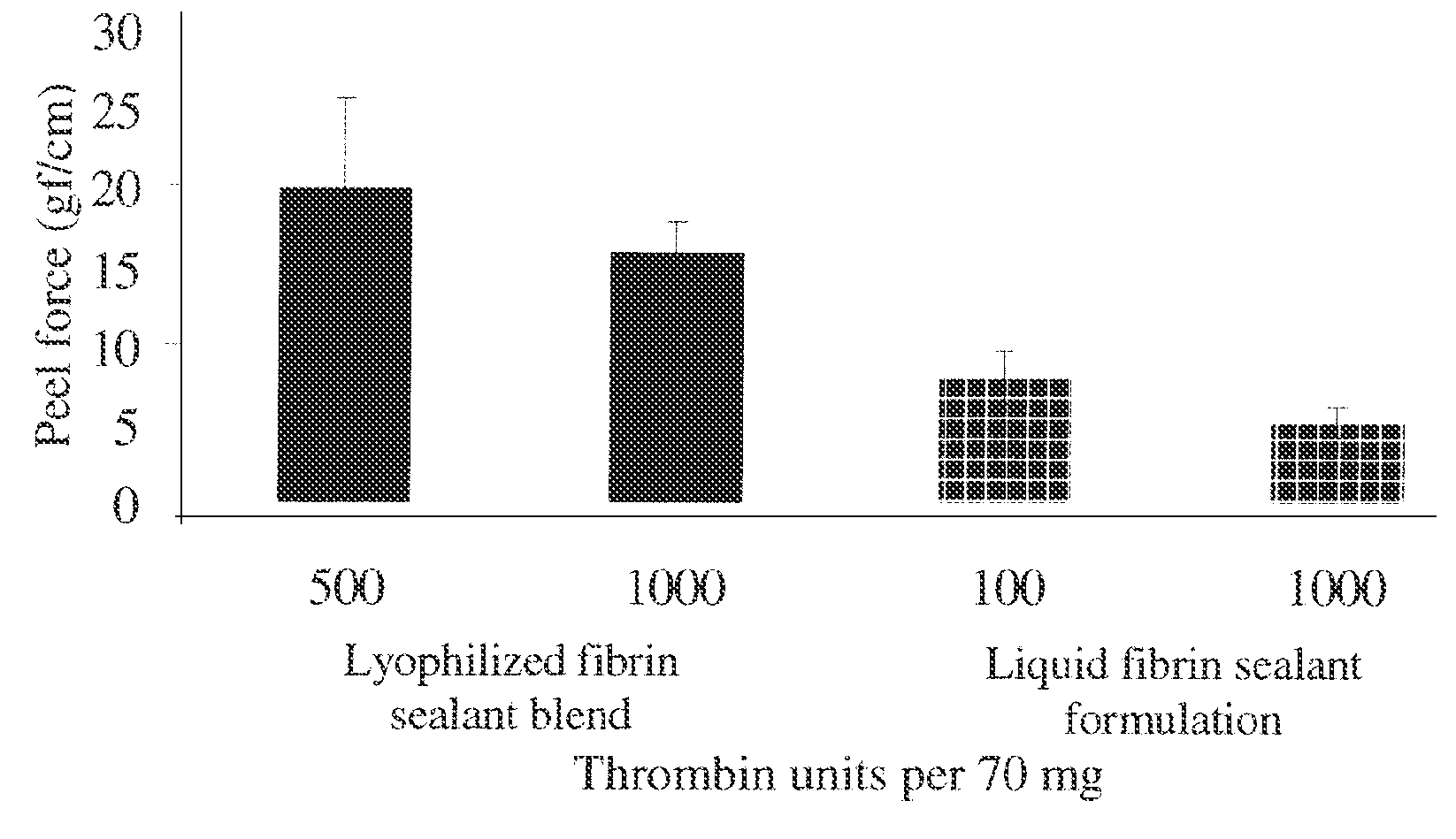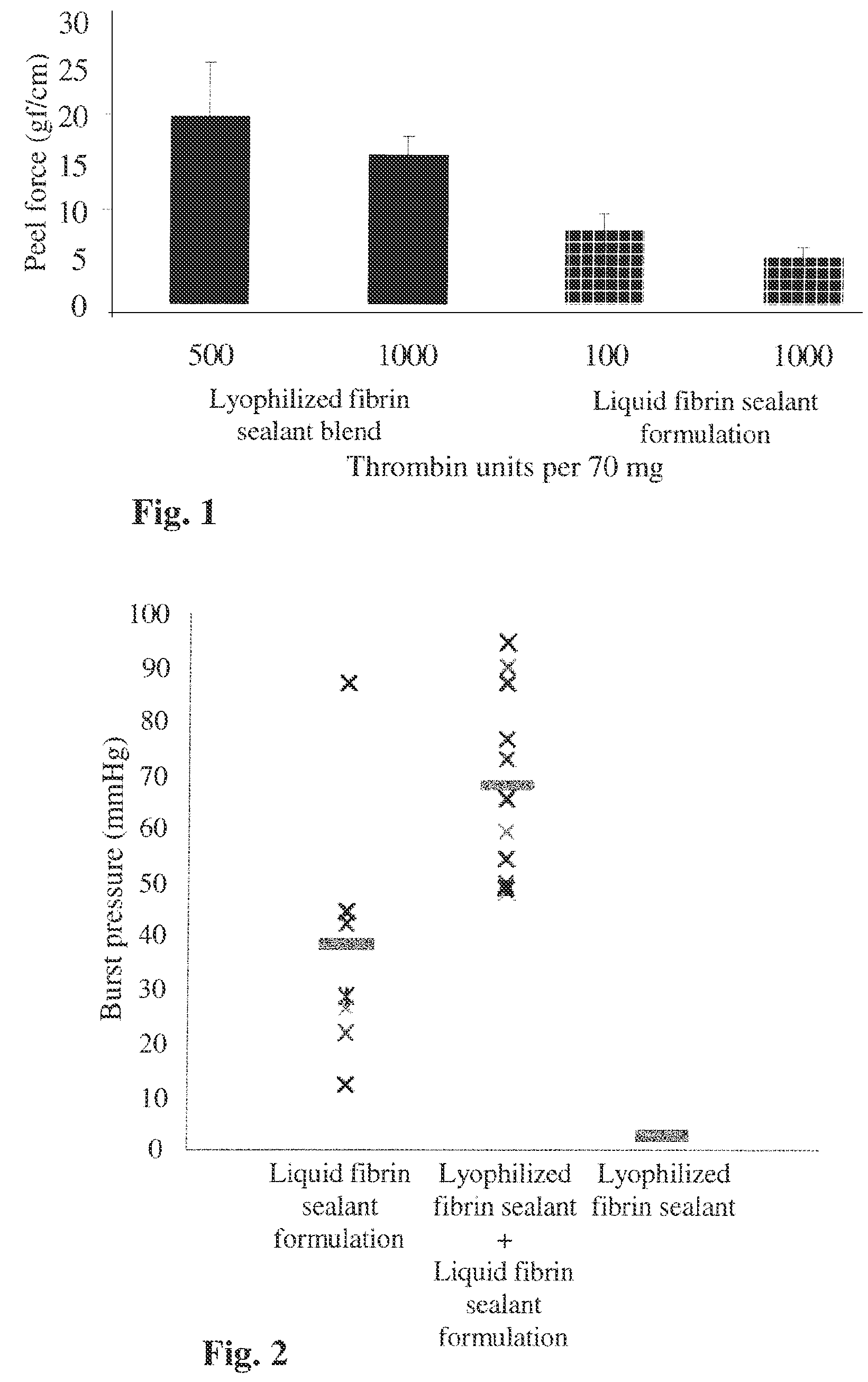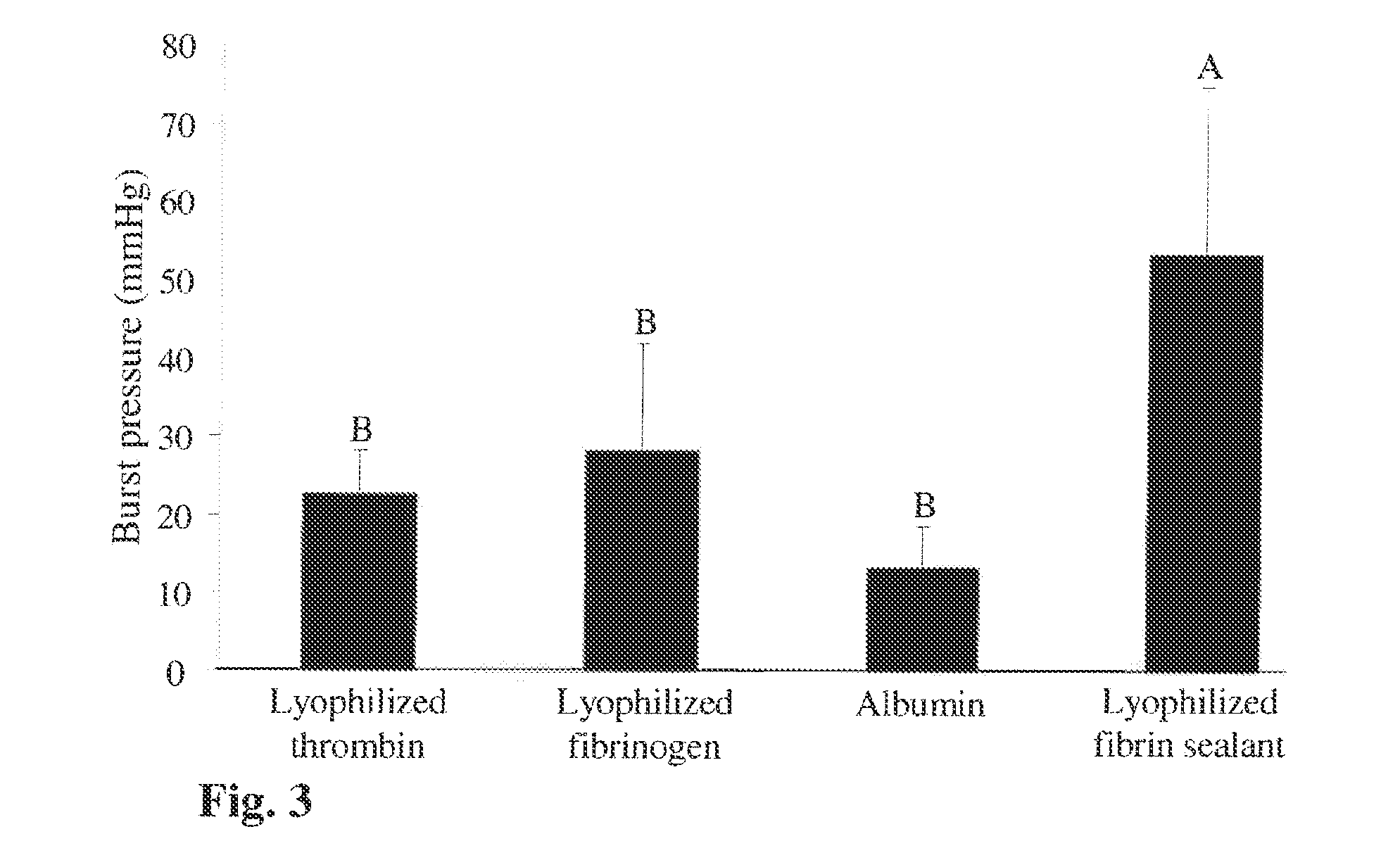Method for improved fibrin sealing
a fibrin matrix and sealing technology, applied in the field of fibrin matrix, can solve the problems of increasing the risk of tissue adhesion, drying procedures are also problematic, and most sealants, including synthetic sealants, are not efficient in sealing tissues, etc., to achieve efficient sealing tissues, improve sealing strength, and improve sealing strength
- Summary
- Abstract
- Description
- Claims
- Application Information
AI Technical Summary
Benefits of technology
Problems solved by technology
Method used
Image
Examples
example 1
The Adhesive Force of Lyophilized Fibrin Sealant and Liquid Fibrin Sealant Formulations
[0161]In the following experiment, the adhesive forces of lyophilized fibrin sealant and liquid fibrin sealant formulations were measured.
[0162]The evaluation was carried out by the peel force test, essentially as described in Nicoson Z R, Buckley C A. “Bond strength of fibrin glue between layers of porcine small intestine submucosa (SIS)”. Biomed Sci Instrum. 2002; 38:179-184. Briefly, the tested adhesive formulation was applied onto the serosal side of a pig's ileum (a segment of 4×10 cm) within a 4×4 cm (16 cm2) parafilm template frame (see application manner below).
[0163]Following application of the different fibrin sealant formulations, the parafilm template was removed, and the ileum tissue was folded upon itself (serosa to serosa) and left for polymerization for 10 min at room temperature (about 20-25° C.). To obtain four replicates, the segment was cut to strips of 1×10 cm and the force ne...
example 2
The Sealing Property of Different Fibrin Sealant Formulations
[0171]The previous example shows that using a lyophilized formulation increases the adhesive force. In this experiment, the sealing properties of three different fibrin sealant formulations were tested: a mixture of lyophilized fibrinogen and thrombin, a liquid fibrin sealant formulation, and a fibrin sealant formed by the sequential application of a mixture of lyophilized fibrinogen and thrombin followed by an application of a liquid fibrin sealant formulation. The burst test [essentially as described in Vilela et al. “What Is Important For Continent Catheterizable Stomas: Angulations or Extension? Int Braz J Urol. 2007; Vol. 33(2): 254-263] was carried out to determine and evaluate the ability of a sealant to effectively seal and withstand pressure.
[0172]The burst pressure in this model indicates on the ability of a tested formulation to adhere to the tissue and maintain its mechanical integrity up to the pressure point ...
example 3
The Superior Sealing Effect of a Fibrin Formulation Formed by Application of Solid Fibrin Sealant Blend Followed by a Liquid Fibrin Sealant Formulation
[0182]In the previous examples it was shown that fibrin sealant formed by a sequential application of lyophilized fibrinogen and thrombin mixture followed by liquid fibrin sealant spraying has a superior sealing property.
[0183]The following example examines the sealing performance of individual application of only one of the lyophilized components (either fibrinogen or thrombin) followed by application of the liquid fibrin sealant using the burst test method. The following example also examines whether application of albumin to the incision which dries the mucous surrounding the intestine may help the fibrin sealant to better adhere to the tissue and thereby increase the sealing performance of the sealant.
[0184]For this purpose the above described burst test (Example 2) was carried out and the sealing property of the following fibrin ...
PUM
| Property | Measurement | Unit |
|---|---|---|
| concentration | aaaaa | aaaaa |
| concentration | aaaaa | aaaaa |
| length | aaaaa | aaaaa |
Abstract
Description
Claims
Application Information
 Login to View More
Login to View More - R&D
- Intellectual Property
- Life Sciences
- Materials
- Tech Scout
- Unparalleled Data Quality
- Higher Quality Content
- 60% Fewer Hallucinations
Browse by: Latest US Patents, China's latest patents, Technical Efficacy Thesaurus, Application Domain, Technology Topic, Popular Technical Reports.
© 2025 PatSnap. All rights reserved.Legal|Privacy policy|Modern Slavery Act Transparency Statement|Sitemap|About US| Contact US: help@patsnap.com



